Get PeakVisor App
Sign In
Search by GPS coordinates
- Latitude
- ° ' ''
- Longitude
- ° ' ''
- Units of Length

Yes
Cancel
Share ×

Scan the QR code and open PeakVisor on your phone
❤ Wishlist ×
Choose
Delete
Southern Taiwan’s luscious, wooded haven, Tengjhih National Forest Recreation Area (藤枝國家森林遊樂區), boasts an extravagant and thriving broadleaf forest. Dong Tengzhi Shan (東藤枝山), which has an elevation of 1,814 meters (5,951 ft), is the only named mountain in this verdant jungle.
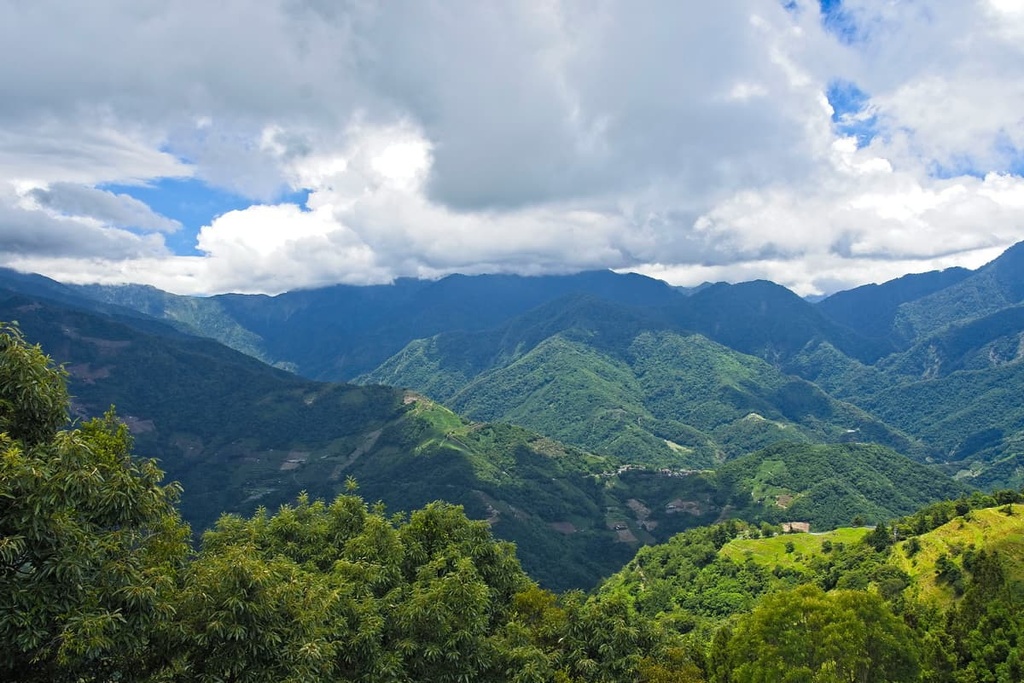
Tengjhih National Forest Recreation Area lies in the Taoyuan District (桃源區) of Kaohsiung City (高雄市) in southern Taiwan. Located at an average elevation of 1,550 meters (5,085 ft), the recreation area contains 770 ha (1,903 acres) of pristine, virgin forests.
While southern Taiwan is known for its hot and humid climate, the annual average temperature of the Tengjhih National Forest Recreation Area is a fresh and crisp 17°C (62°F). For most of the year, especially during the rainy season from May to September, the forest is draped in a misty haze.
In the lowest elevations of the recreation area between about 500 meters (1,640 ft) and 1,814 meters (5,951 ft), Tengjhih National Forest Recreation Area’s warm-temperate broadleaf forest thrives in the region’s cool, foggy weather.
The highlights of this pristine forest are its diversity of plant life and its fascinating wildlife. In fact, the Bunun tribe historically used Dong Tengzhi Shan and the surrounding hills as a hunting ground. There are also over 1,700 plant species in Tengjhih’s bountiful woods alone.
From within this emerald jungle, hikers can also see the summits of Yushan (玉山), Guanshan (關山) and Beidawushan (北大武山), both of which are part of Taiwan’s 100 tallest mountains or Baiyue. The spine of the lengthy Central Mountain Range (中央山脈) runs adjacent to Tengjhih National Recreation Area.
Other nearby parks include Yushan National Park (玉山國家公園) to the northeast and Alishan National Forest Recreation Area (阿里山國家森林遊樂區) to the north. Dawu Mountain Nature Reserve (大武山自然保留區), which lies to the south, and Taijiang National Park (臺江國家公園), which is located to the west, are two other areas that are worth checking out.
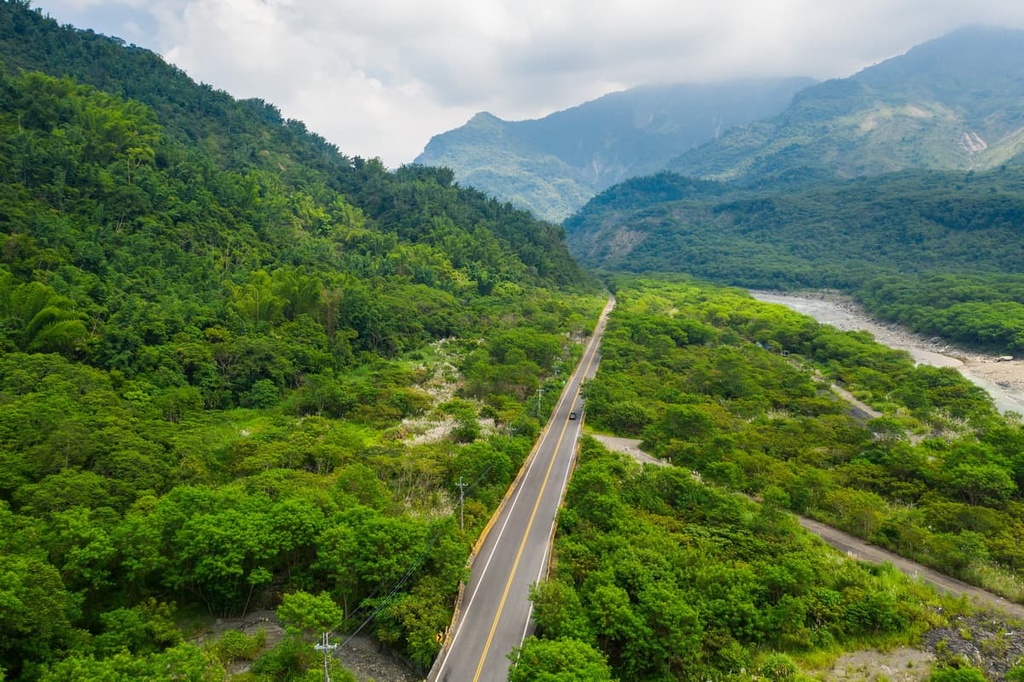
Around 4 to 5 million years ago, the friction stemming from the collision of Eurasian and Philippine Sea plates created the island of Taiwan and all of its jagged mountain ranges.
Taiwan has five major mountain ranges, the most extensive being the 260 km (161 mi) linear Central Mountain Range. The island is also home to the Yushan Range (玉山山脈), Xueshan Range (雪山山脈), Hai’an Range (海岸山脈), and Alishan Range (阿里山山脈).
Tengjhih’s sole peak, Dong Tengzhi Shan, is part of the western branch of the Central Mountain Range.
The park’s rock strata consist of metamorphosed rock that dates back to the Tertiary era. A mixture of slate and quartz sandstone can also be seen in the lowest elevations of the recreation area.
A flourishing broadleaf forest proliferates in the lower forest zone of Tengjhih National Forest Recreation Area. This forest is home to Lauraceae and Fagaceae plant communities. Tengjhih forest’s flora contain over 40 percent of Taiwan’s endemic plant species.
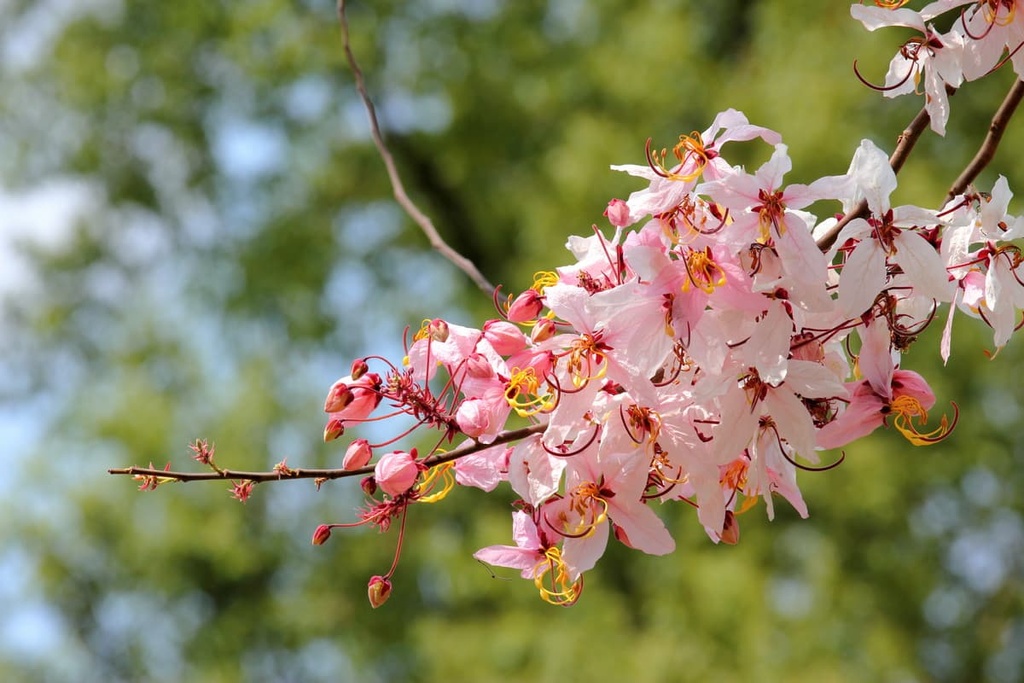
The deciduous hardwood forest of the recreation area consists of camphor, maple, and rhododendron trees. A unique flower, Taiwan’s native Begonia chitoensis, thrive in Tengjhih’s forest, too.
Interestingly, during the Japanese Occupation Era, Kyoto University students used Tengjhih’s green space as an experimental forest. Thus, Japanese cedar flourishes in the woodlands, making it the only place in Taiwan where this plant grows.
In higher elevations of 1,500 to 1,814 meters (4,921 to 9,591 ft), Tengjhih’s alpine broadleaf forest mixes with coniferous plant species. Taiwan two leaf pine, Taiwan fir, Taiwan cedar, and Taiwan cypress all dominate the cold, misty grove.
Mammals of various sizes roam Tengjhih’s lush woods. The Formosan black bear, Formosan rock macaque, and the white-faced flying squirrel are some of the most notable species found in the region.
The forest is home to a fascinating array of bird life, too. Some of the most notable birds you can see in the forest include the yellow tit, Taiwan bush warbler, and the white-crested laughingthrush.
Additionally, a variety of insects can be found in this verdant leafy environment. The emperor moth, Taiwan cicada, and the Cape stag beetle are a few of the many insects that inhabit the forest.
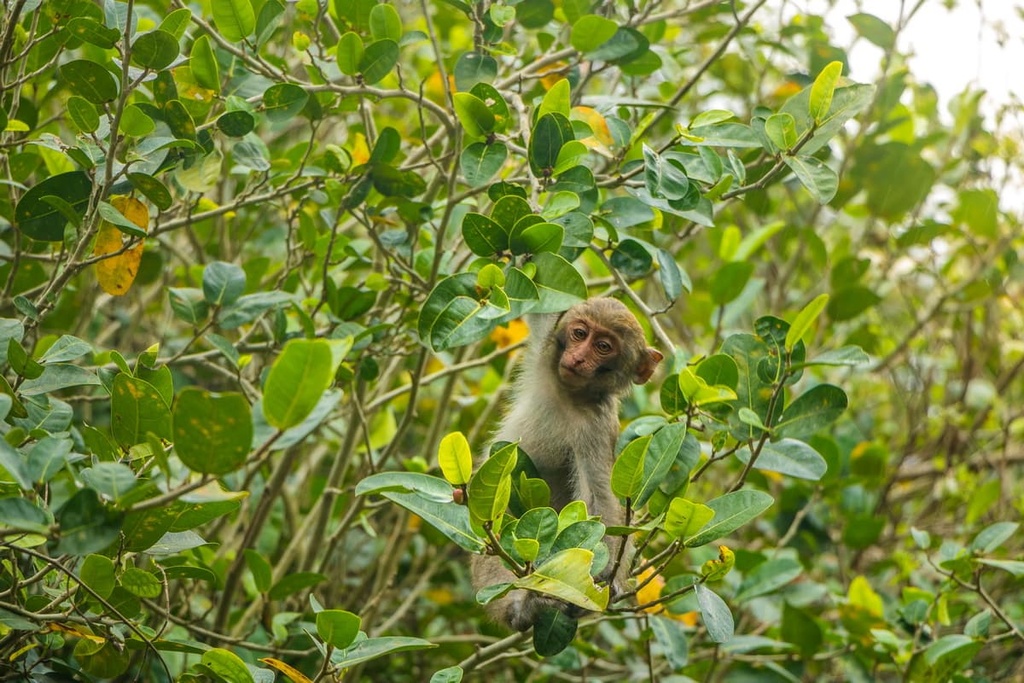
Under Japanese governance, the region was known as the Fujieda Forest. To this day, Tengjhih and Fujieda are used interchangeably; however, Tengjhih National Forest Recreation Area is the official name of the region.
During the Japanese Occupation Era, the Japanese used Tengjhih and its surrounding area as a logging base for camphor trees. Understandably, the Bunun tribe who lived in the mountain forests were unhappy about the logging business, and friction began to fester between the Japanese and the Bunun.
As a result, in order to stifle uprisings among the Bunun, the Japanese built the Liugui Police Patrol Road.
The purpose of creating this guarded area was to keep the Bunun away from interfering in logging operations. High fences with barbed wire were erected on the mountain, and 54 police stations were placed in the area. Four police can still be seen in Tengjhih’s mountain forest.
Additionally, the Japanese stationed military troops in the region to act as a further deterrence to Bunun. Japanese logging officials built Dong Tengzhi Shan’s observation deck for the sole purpose of sighting illegal logging and forest fires.
Tengjhih National Forest Recreation Area is home to plenty of great hikes for visitors to enjoy. Here are some of the most visited hiking trails and destinations in and around Tengjhih National Forest Recreation Area.
The Dong Tengzhi Shan Hiking Trail is a scenic trail to the summit of Dong Tengzhi Shan. This trail climbs 369 meters (1,210 ft) in elevation over the course of 3.5 km (2 mi) from the Tengjhih Visitor Centre.
An observation deck stands on Dong Tengzhi Shan’s peak, overlooking the gorgeous forest below and offering good views of Yushan, Beidawushan, Guanshan, and Xiaoguanshan (小關山).
Due to the damage that Typhoon Morakot inflicted in 2009, Taiwan forestry officials closed Dong Tengzhi Shan’s hiking route as a safety measure. Over the years, similar typhoon activity brought landslides and extreme flooding to the region, causing the trail to temporarily close to the public.
As a result, Dong Tengzhi Shan’s trail was devoid of much human activity for many years. This allowed the thriving virgin forest to overgrow the trail and create a beautiful moss-covered environment.
Additionally, the presence of birds and the cicada’s choir of high-pitched chirping echoes throughout this leafy, sheltered trail. Swallowtail butterflies and emperor moths can be seen along this hike, too, flying amongst the region’s dense woodlands and adding shades of color to the region.
On the Begonia Trail, nature enthusiasts can delight in viewing Tengjhih begonia (Begonia tengchiana), Tengjhih’s unique flower species. A wooden walkway leads you along this 1.4 km (0.8 mi) long trail, which is draped in dazzling varieties of begonias.
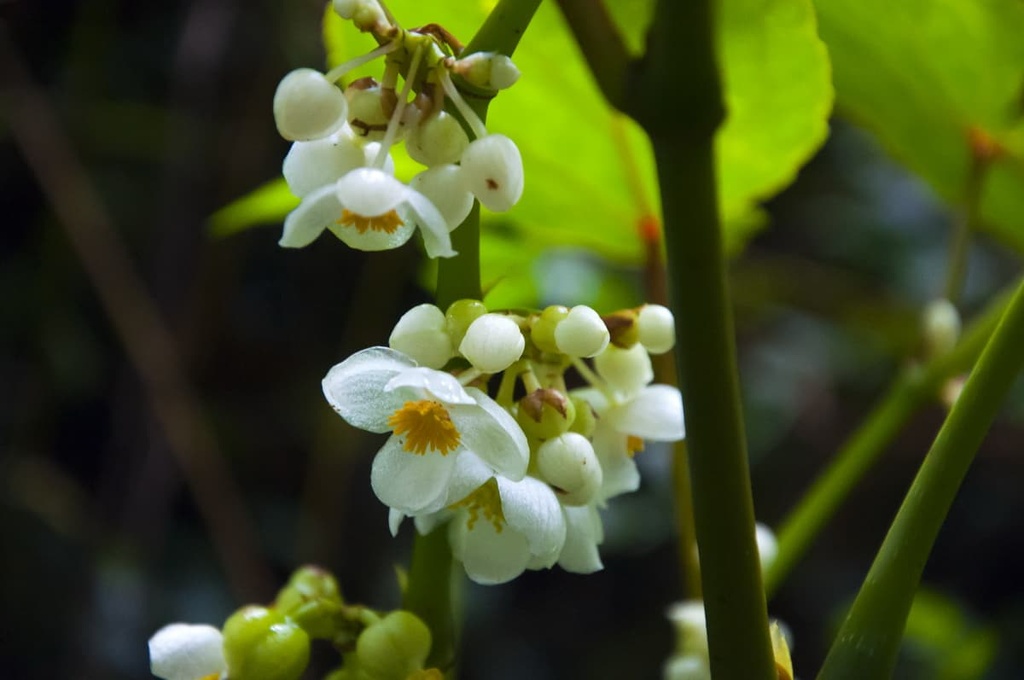
Many different types of begonias, such as Begonia buimontana Yamamoto, Begonia chuyunshanensis, and Begonia randaiensis Sasaki can be seen along this trail. Furthermore, a vivacious show of various ferns, such as the sawtooth kelp fern, turnip fern, and fishbone fern, thrive along the route.
Stationed on this verdant trail is a birdwatching pavilion for eager birdwatchers to observe the many different bird species of Tengjhih’s flourishing broadleaf forests.
Tengjhih’s longest trail is the Rhododendron Trail, which is 2.5 km (1.5 mi) long. This gentle path rises gradually, guiding hikers through shaded hardwoods that burgeon with pink pastel begonias in the springtime.
History is ever-present along this trail as you can see the ancient stonework of traditional Bunun residences and the ruins of an old Japanese police station. The Fuchu Police Station, which once flanked the northern boundary of the Liugui Guard Road, can also be seen along this trail.
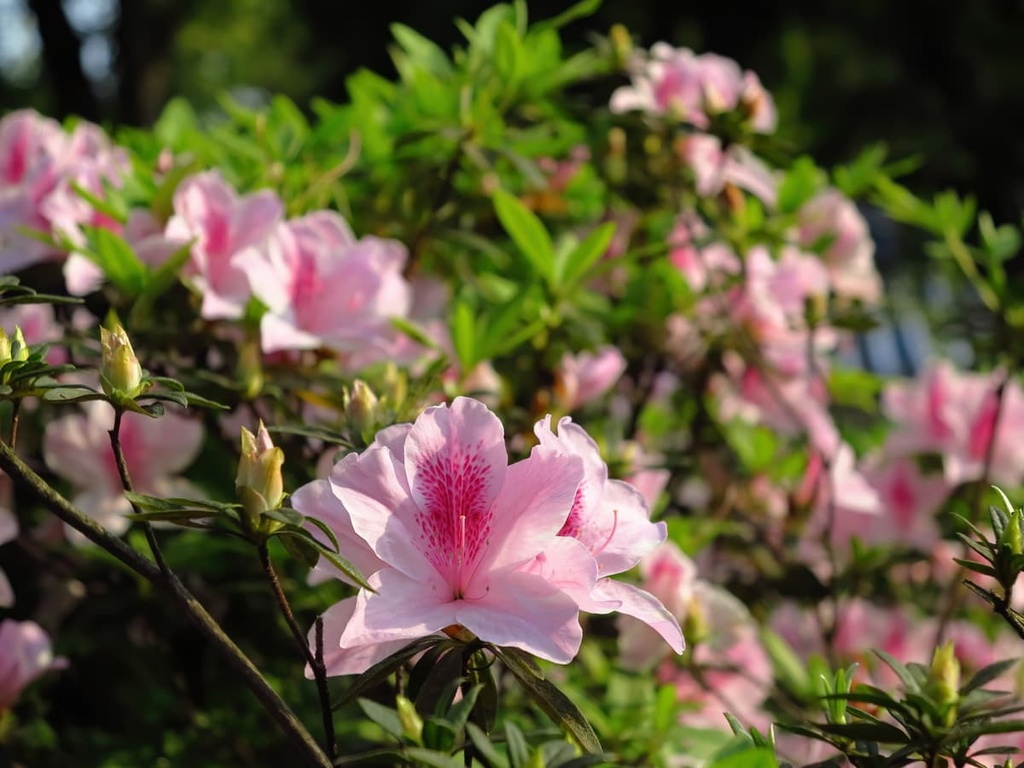
The views from the clearings along the Rhododendron Trail are majestic, as the southern Taiwan sun radiates the undulating terrain overlooking Xiaotianyuan Shan (小田原山) and Xinan Shan (溪南山). Due to the high elevation of the region, the woodland is frequently covered in a layer of mist.
The trail then slowly descends into a thicket of towering Taiwan fir and Taiwan cypress. A plush mossy carpet eventually leads hikers to a stone oak tree that signals the end of the trail and the start of the Spruce Trail.
One of Tengjhih’s shortest hikes at just 0.9 km (0.5 mi) in length, the Spruce Trail begins with a beautiful rest area surrounded by clusters of Japanese cedar that offers an excellent reprieve from Taiwan's often oppressive sun.
Although this hike is short, the trail’s elevation increases sharply as a series of wooden steps usher hikers along the dense woods.
Once again, hikers can note historical elements of the past along this trail. For example, Japanese loggers created a wooden cart with a curved underside to easily transport giant and heavy felled timber along wooden tracks, which you can see to the side of the path.
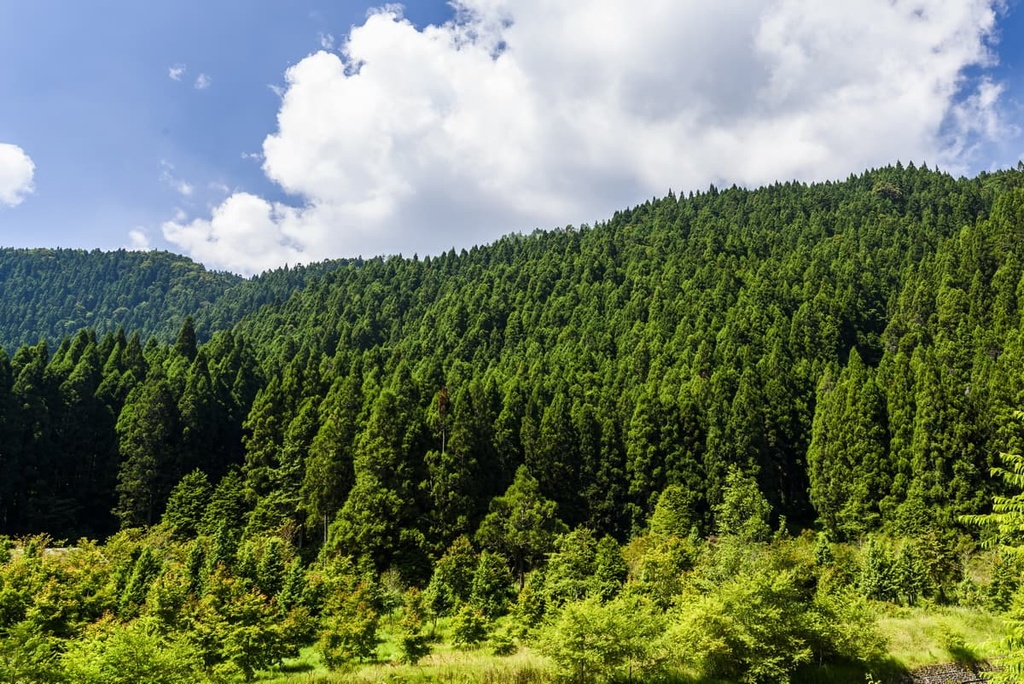
The region’s ethereal forest fog descends upon the Spruce Trail, adding a mystical element to the towering timbers that swarm the fertile landscape. Hikers then descend the wooden steps to connect with the Begonia Trail that leads to the summit of Dong Tengzhi Shan.
A mass of Moso bamboo dominates the idyllic Sea of Trees Trail. This sleek and tubular green grass is found in low to middle elevation hills in the region with moderate slopes and it features emerald stalks that shoot upward in differing sizes, forming a wave of rippling bamboo.
Along this 1 km (0.6 mi) trail, one of the only sounds hikers can hear is the flute-like notes of the gusty mountain breeze as it travels through these bamboo shoots. Clusters of Japanese cedar signal the end of the trail, which terminates at an intersection with the Spruce Trail. A glorious viewing deck displays the springtime shower of cherry blossoms in the lower forest zone, a splendidly scenic sight to behold.
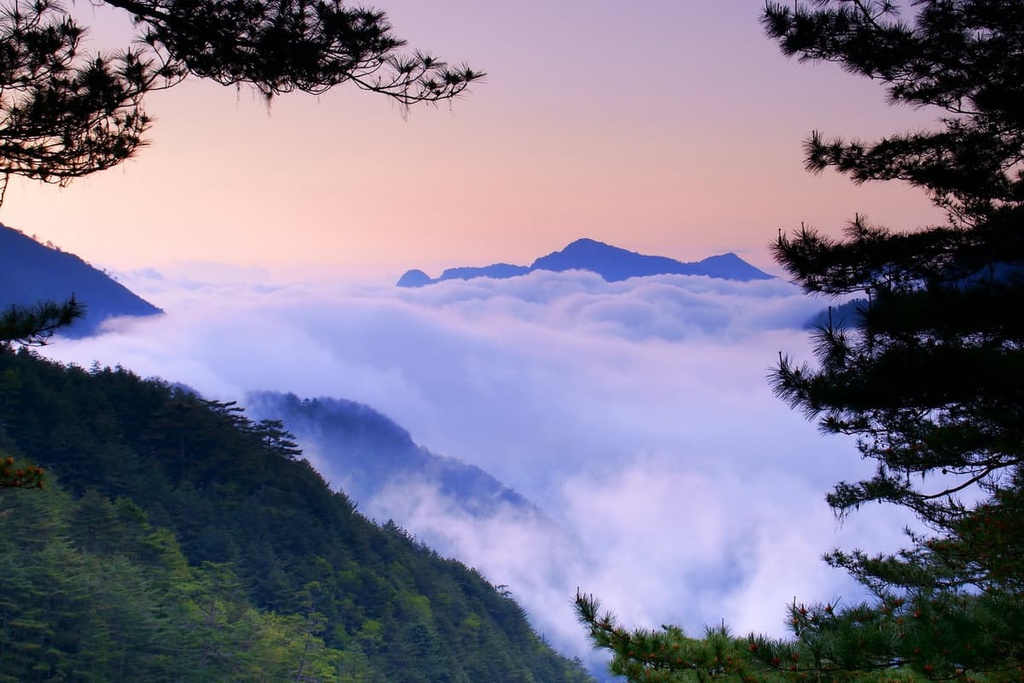
The magnificent Shi Keng Hot Spring (十坑溫泉) is one of southern Taiwan’s crown jewels. Visitors must first undergo a 10 km (6 mi) trek to reach the striking cavern walls, which shimmer in crystallized white, turquoise, and black. A feeder of the Baolai River, Shi Keng’s neutral sodium bicarbonate waters simmer at a temperature of around 50°C (122°F).
While there are many well-known hot springs in this area, the Shi Keng Hot Spring is by far the most sought after. It features gorgeous scenery and a peaceful atmosphere.
During the long walk to Shi Keng Hot Spring, hikers can also see Taiwan carp swimming in the streams and Japanese tree frogs hopping along the river’s edge. Birds are plentiful in this area due to the abundant foliage; thus, hikers can encounter Taiwan blue magpie and blue-bellied pheasants as they walk.
Kaohsiung and Tainan (臺南市) are the two closest cities to Tengjhih National Forest Recreation Area.
Southern Taiwan's largest city, Kaohsiung, is a thriving port city that’s sometimes referred to as the Harbor Capital of Taiwan. The region’s year-round warmth and sunshine is indeed a reason visitors gravitate to the vibrant metropolis of Kaohsiung.
Nicknamed Monkey Mountain due to its heavily populated residential primates, Shoushan National Nature Park (壽山國家自然公園) is the perfect place to spend a sunny weekend hiking along the verdant routes of Kaohsiung's coastal hills. Visitors can marvel at the Taiwan Strait and Kaohsiung's city center's pristine views from the park, too.
Another great short day trip from Kaohsiung is the butterfly sanctuary of Maolin National Scenic Area (茂林國家風景區). Several mesmerizingly gallant flowing waterfalls can be found in Maolin's scenic valley. Here, visitors can journey through the many hiking trails lined with southern Taiwan's lush tropical flora.
Lotus Lake is another Kaohsiung staple. Every visitor should visit this charming lake that’s awash with floating lotus flowers and surrounded by elaborate pavilions. The Tiger and Dragon Pagodas are particularly popular places to visit. Visitors can enter the pagoda through the dragon's mouth to climb to a viewpoint that overlooks the entire lake.
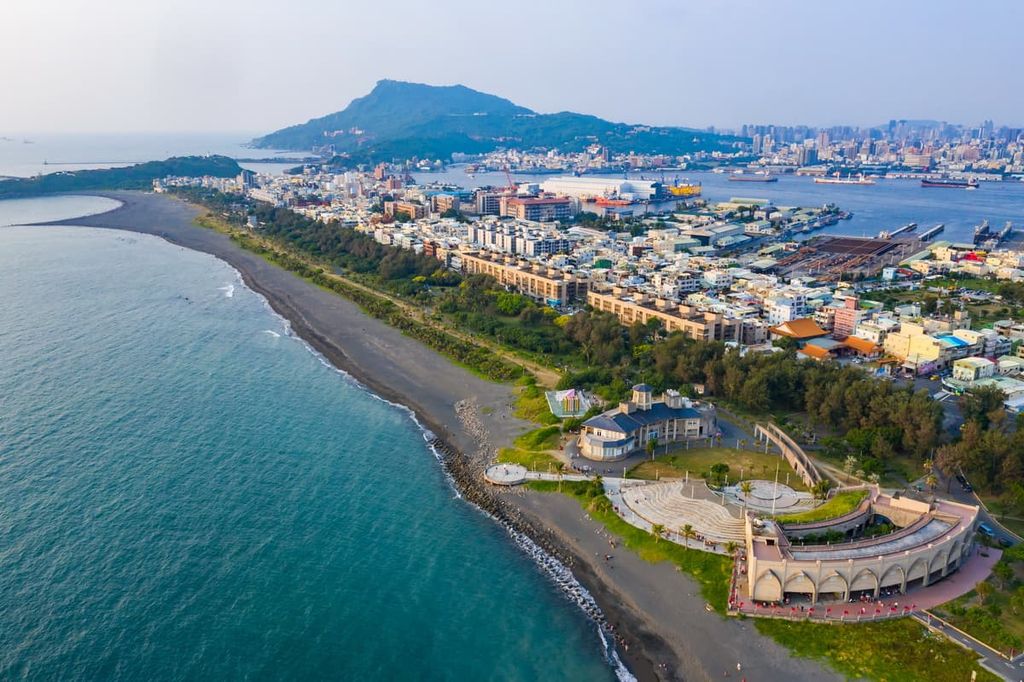
In the city itself, the striking 85 Sky Tower adds character to the Kaohsiung skyline. Before the construction of Taipei 101, 85 Sky Tower was Taiwan's highest structure. The building has 85 floors and stands at 347.5 meters (1,140 ft) tall. Visitors can head to the observatory on the 75th floor for a good view of the city below.
The magnificent stained glass display, the Dome of Light, at Formosa Boulevard's MRT Station is another must-see. Approximately 4,500 vibrant glass sheets illuminate the ceiling of Formosa Boulevard's main ticketing hall. Created by an Italian designer, this magnetic structure measures a diameter of 30 meters (98 ft), and is truly a work of art.
Once the historic capital of Taiwan, Tainan retains old-world charm as the landmark quarters of Anping District display the city’s imperial past. In addition to its historical importance, Tainan is considered the food capital of Taiwan, where both ancient recipes and modern fusions delight the palate of locals and tourists alike.
A wander down Tainan’s ancient merchant road, Shennong Street (神農街) is a must for a glimpse of the past. The Tainan Council has remarkably preserved the old shopping quarters. The narrow road is draped in low hanging Chinese lanterns and lined with potted plants. Many shops on the street still retain their historic facades, too.
Set along Tainan’s coastal wetlands, the nearby Taijiang National Park (台江國家公園) focuses on conserving marine animals and plant life. In the winter months, the endangered black-faced spoonbills migrate to the Zengwen River, much to the delight of bird enthusiasts. The Sicao Mangrove Green Tunnel is another popular park feature, as visitors can take a boat ride down this enchanting emerald tunnel.
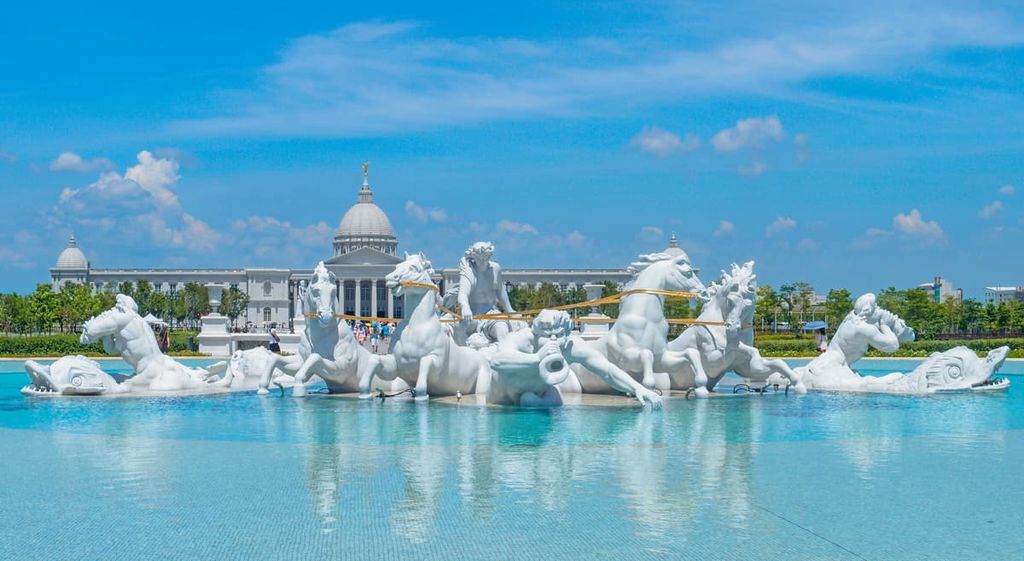
In 1624, Dutch sailors reached the shores of Tainan in the hopes of establishing a trading route. The Dutch built Fort Zeelandia, otherwise known as Anping Old Fort, to protect their hold over the trading port.
Over the centuries, Fort Zeelandia changed ownership many times, moving between the Qing Dynasty, the Japanese, and finally the Taiwanese. The old fort is now a tourist attraction in Tainan where visitors can wander the red brick paths lined with lush banyan trees.
Once a storage space for sugar and camphor, the former Tait & Company Merchant House in Tainan is a historic building that all visitors ought to see. It now features a museum that tells the story of trade in the city. Next to the merchant house, you can find the Anping Tree House, which is an old warehouse that has since become covered by banyan tree roots and branches.
Taking the honor as Tainan’s largest night market, the Flower Night Market is a lively place to visit during your stay in the city. Located in Tainan’s accessible North District, the Flower Night Market pulsates with energy every evening. Local specialities and international dishes are offered here, such as oyster omelet, stinky tofu, coffin bread, Korean rice cakes, and Japanese takoyaki.
To get to Tengjhih, visitors can make their way to Kaohsuing using the Taiwan High-Speed Rail (HSR) or local express train (TRA) from any of Taiwan’s major cities.
From Kaohsiung Train Station, visitors can take the Kaohsiung Passenger Co. Bus headed to Liugui. They will then get off at the Liugui Stop before transferring to another Kaohsuing Passenger Co. Bus from Liugui to Tengjhih Forest Recreation Area.
Alternatively, you can drive to Tengjhih from Tainan (98 km/61 mi) and Kaohsiung (87 km/54 mi).
Explore Tengjhih National Forest Recreation Area with the PeakVisor 3D Map and identify its summits.








